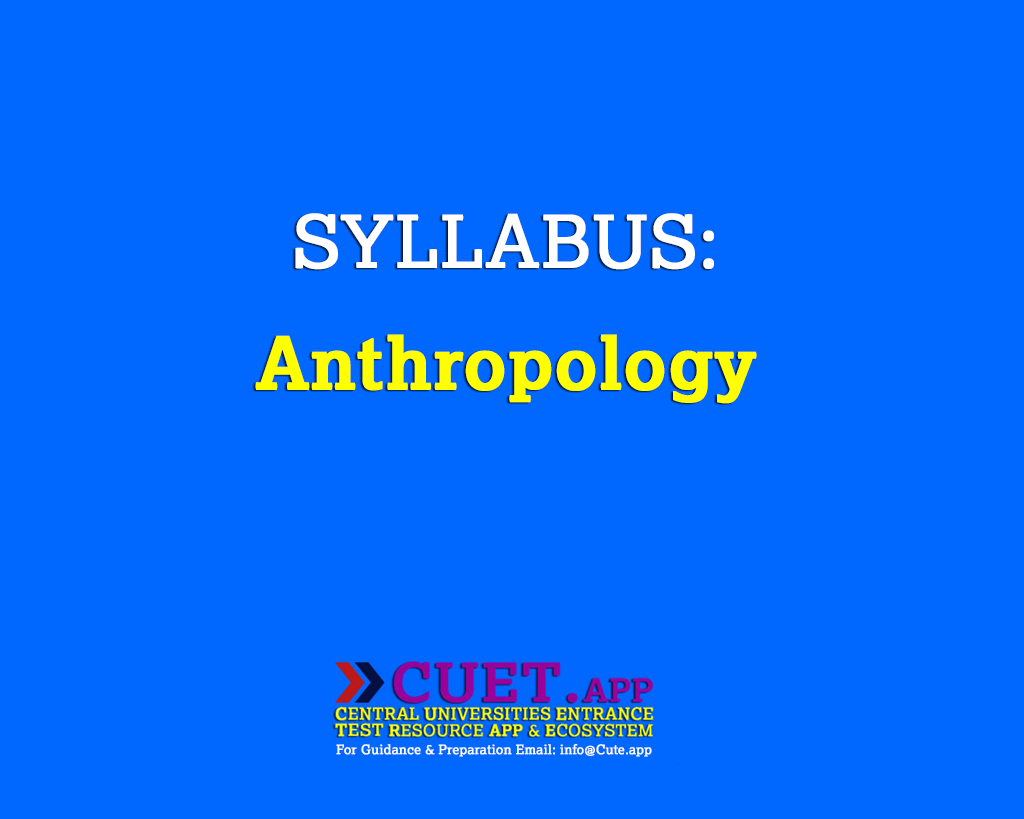ANTHROPOLOGY (303) | Syllabus for Class 12
Note: There will be one Question Paper which will have 50 questions out of which 40 questions need to be attempted.
Unit-1: Physical Anthropology:
(i) Preliminary knowledge of Human genetics. Mendel’s Laws of heredity Mono-hybrid and Di-hybrid ratio.
(ii) Definition of Race and Racial criteria, significance of skin colour, Eye form and colour, Head form, and AB a blood groups as racial criteria.
(iii) Racial classification, distinctive physical features and geographical distribution of the major racial groups of man: Caucasoid, Mongoloid, Negroid and Australoid.
Unit-2: Prehistoric Archaeology:
(i) Tool Making: Techniques of manufacturing core and flake tools, primary and secondary flaking, pressure flaking, grinding and polishing. Materials used in making prehistoric tools.
(ii) Tool families: Pebble tools, Hand Axe, Cleaver, Scrapers, Microliths, Points, Blades, Awl, Graver, Celts, Sickles, Spear-head, Arrow-head and Bone tools.
(iii) Pre-historic Cultures: A brief outline of the following pre-historic cultures of the Paleolithic, Mesolithic and Neolithic periods
(iv) A comparative study of the salient features of Paleolithic and Neolithic cultures
Unit-3: Material culture and economic Anthropology:
(i) Economic life: meaning and aspects, characteristic features of primitive or simple economic system.
(ii) Subsistence economy: domestication of animals-pastoralism, agriculture-shifting cultivation, horticulture, terrace cultivation and plough cultivation.
(iii) Brief outline of the methods of hunting, fishing and agriculture with reference to Various communities of North East India as far as practicable.
Unit-4: Social Anthropology and Ethnography:
A : Social Anthropology :
(i) Family: Definition, forms and types: nuclear family, joint family, family of orientation, family of procreation, monogamous and polygamous (polygynous and polyandrous).
(ii) Clustered relationship in a nuclear family.
(iii) Rules of residence: Patrilocal, matrilocal, neolocal, avancolocal, bi-local, matri-patri local.
Rules of descent: Patrilineal and matrilineal descent.
(iv) Functions of family, social nature of family.
B : Ethnography :
(i) A brief outline of the land and people of North-East India.
(ii) Study of material culture and economic life of the following communities
(iii) The Garo: Shifting or Jhum cultivation.
(iv) The Mishing: Plough cultivation
(v) A study of social organization of the AoNaga and the Apatani.
Unit-5: Ecology
(i) Meaning and definition of ecology and environment.
(ii) Elements of the environment: Solid, liquid, andgas.
(iii) Physical or Abiotic environment, biological or biotic environment and socio-cultural environment.
(iv) Man as the main agent to disturb the ecological balance


